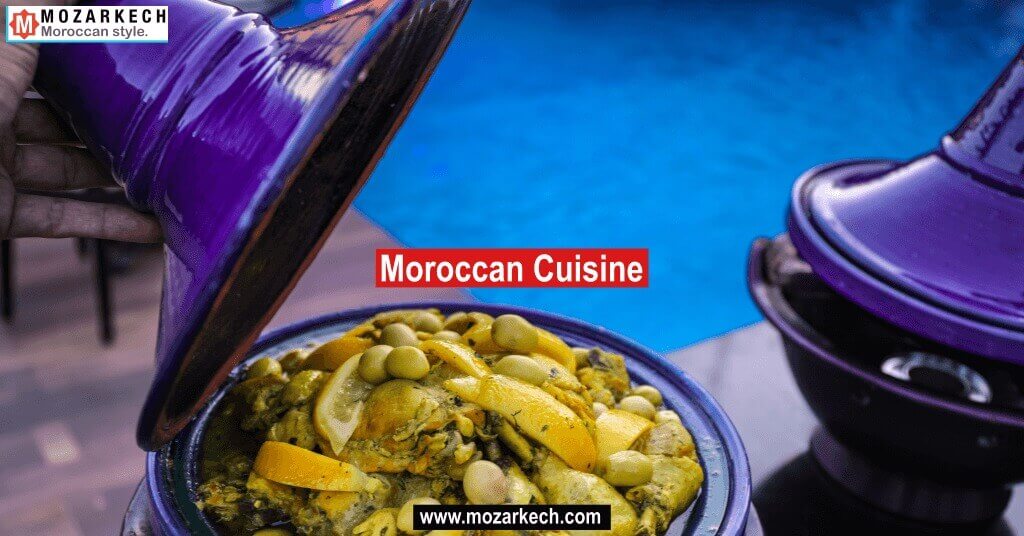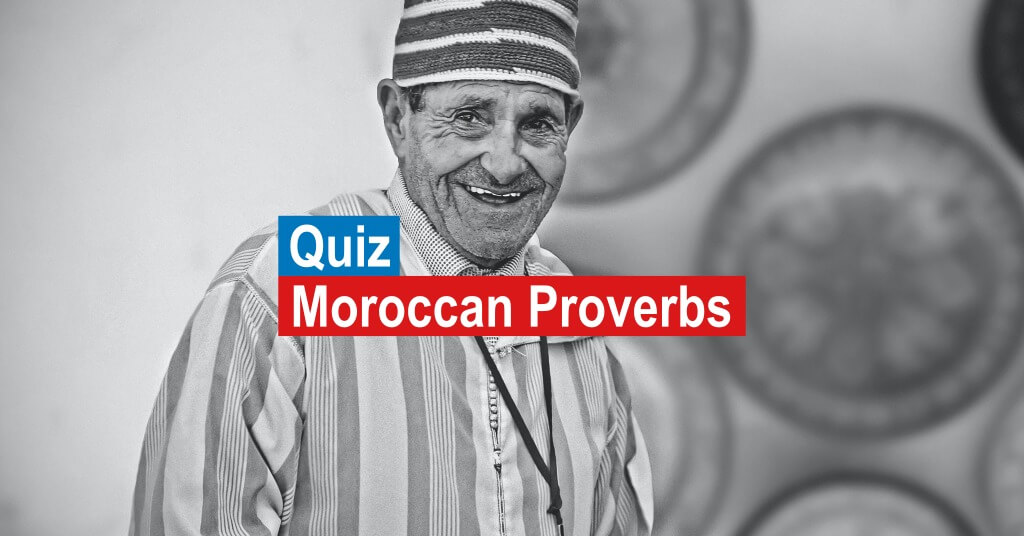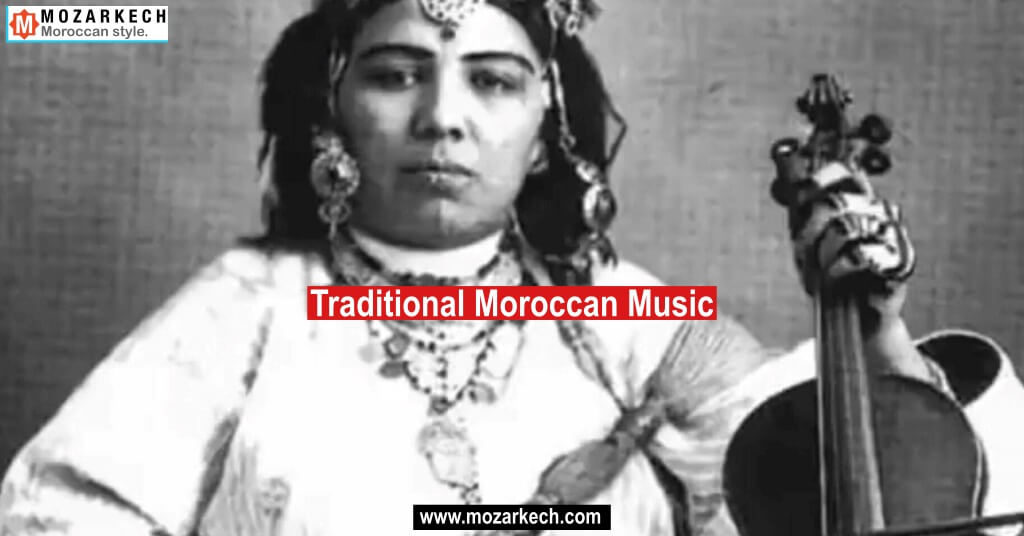
Moroccan cuisine is a true artwork. It is an important aspect of Moroccan history. Moroccan cuisine is known for being one of the most refined and varied in the Arab world.
Morocco’s cuisine has been inspired by its decades of contacts and encounters with other cultures and nations. It is usually a blend of Amazigh, Andalusian, and Mediterranean cuisines, with sub-Saharan African and European (French and Spanish) backgrounds. Moroccan cuisine makes heavy use of spices. While some spices have been imported to Morocco through the Arabs for thousands of years, many ingredients are cultivated locally and exported, such as saffron from Taliouine, mint and olives from Meknes, and oranges and lemons from Fes.
1. Tagine
The Moroccan Tagine, one of the country’s most common dishes, is a slow-cooked stew with beef, vegetables, and nuts.
The Tagine is a Moroccan culinary preparation prepared and cooked in terracotta Tagine (a round, hollow cooking jar with a cone-shaped lid). It’s set in a conical shape and cooked until tender, resulting in a delightful and desirable appearance. Tagines are usually served hot, with meat, vegetables, and sauce scooped up with pieces of Moroccan bread called in Moroccan language (khobz).
2. Couscous
Moroccan couscous, also known as seksu or sikuk, is the country’s national dish. The dish’s name is mystery, but many attribute it to the hissing sound it makes when steam passes through the holes in the couscoussière (steamer).
While most Moroccan families cook and consume couscous on Fridays, a few do so at least once a week. Despite some disagreement, couscous is a North African food whose origins are most closely related to the Amazigh.
Although couscous is often used as a base for meat or vegetable stews, it may also be used as a snack or side dish on its own, flavored or plain, warm or cold. It’s made in Morocco with a range of other kid-friendly ingredients including dried fruit, almonds, and cinnamon.
As a result, many people believe that couscous can take no more time to cook than spaghetti. While a decent couscous can be made if done correctly, an authentic couscous can take up to five hours to prepare. One of the most common variations is couscous with seven vegetables. Lamb, beef, or chicken is stewed with a selection of vegetables before being piled high on a bed of tender, steamed couscous grains. All gathers around one super-sized communal pan, as they do with many other Moroccan dishes.
3. Bastilla
Morocco’s most popular savory pastry and it don’t get any better than this. Traditionally, pigeons were used, but now a day, chicken is cooked with saffron, ginger, pepper, and cinnamon, then layered with herb-laden omelet and fried almonds scented with orange flower water within crispy warqa pastry. Taste and texture come together beautifully in this dish.
The name of the pie derives from the Spanish word Pastilla, which means “pill” or “small pastry” in modern Spanish due to the Arabic language’s translation of the phoneme “p” into “b.” In 13th century Andalusi cookbooks, the researcher Anny Gaul attests to recipes that bear “a close resemblance to the stuffing that goes inside modern-day Bastila.”
According to Ken Albala, the basic concept of pastilla was most likely introduced to Morocco by Moorish Muslims fleeing Spain in the 16th century, or perhaps earlier, since there had been significant trade between Morocco and Spain after the Moors entered it in the seventh century. Bastilla comes in two varieties in Morocco: one with poultry and one with seafood. Bastilla is usually eaten as an appetizer at the outset of a special dinner.
4. Mechoui
The best place to try Moroccan roasted lamb, known as Mechoui, is in Marrakesh, where whole lamb is roasted in deep pits of smoldering araar wood. But don’t worry: if you want to try roasted lamb at home, you won’t have to dig a hole in your backyard.
In North Africa, this dish is very popular.Méchoui is a term used in Algeria and Morocco to describe the practice of cooking a whole lamb or sheep on a spit.
Méchoui is a dish that is traditionally eaten at the start of a meal as part of a feast or diffa. The host takes slices of grilled lamb or beef and serves them to visitors with his right hand’s fingertips.
The cooking is started slowly so that the interior cooks nearly simultaneously with the exterior. The meat is rubbed with melted butter or oil during preparation to make it crispy.
The lamb is gradually taken closer to the hot embers, causing the meat to turn amber in color. The cooking time varies depending on the animal’s weight, but it’s usually about a quarter of an hour per kilogram.
Mechoui is traditionally served without cutlery and, owing to the slow cooking of the lamb or beef; it should be able to be detached without difficulty. Roasted lamb or Mechoui is the best way to prepare it because it is rich, smoky and so greasy.
5. Rfissa
Rfissa is a Berber dish popular in Morocco, where it is served at a variety of traditional celebrations.
It’s typically served with chicken, lentils, and fenugreek seeds (tifias in Amazigh, helba in Arabic), as well as msemmen, meloui, or day-old bread and a ras el hanout mix.
While there is nothing sophisticated about pouring hot meat and broth over a plate of bread, such simple fare is known as savory, satisfying comfort food at its finest all over the world.
Rfissa, a stunning introduction of stewed chicken and lentils fragrantly flavored with fenugreek, saffron, and ras el hanout, is the Moroccan version.
The dish is well-known for being served to new moms as fenugreek is thought to help women recover from childbirth, but it’s also a popular specialty dish to serve to family and friends on other occasions.
Rfissa is usually eaten by a group of people gathered around a large platter, with each person taking turns eating from his side of the platter.





